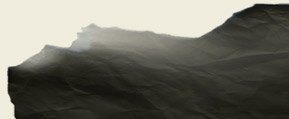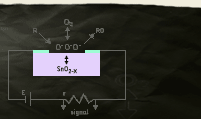 |
 |
  |
|||
|
|
|||
e-taz (electronic temporary autonomous zone) |
|||
| Stefan TIRON | |||
| curateur / curator | |||
Julie AULT Catherine DAVID Simone FORTI Catherine FURET Krist GRUIJTHUIJSEN & Johan LUNDH Jan KOPP Emmanuel LOUISGRAND Pierre MAHEY Viktor MISIANO Nils NORMAN Melik OHANIAN Florian SCHNEIDER |
find below the English version RO In cadrul proiectului 'Un pas intr-o parte' noi ne-am propus sa ne adresam cu o intrebare personalizata artistikor, curatorilor, activistilor, arhitectilor etc. activitatea carora re-activeaza modul participativ, si aici ar fi cazul sa mentionez citeva proiecte prezentate pe http://www.2020.ro cum e incepem e-gropup, fanzine, secret garden, a 1st person shooter de Miklos Szilard, imagine beauty/define beauty de Liliana Basarab inclusiv recentul proiect propus – Targul DIY.
From : Stefan Tiron Problema alegerii aici de catre un grup este una spinoasa dat fiind ca uneori devine imperativ(sau o sansa unica) sa partici la o chemare pt contributii(un "call" for action) pt ca in rest sint putine locuri unde poti participa cu lucrari, idei, sugestii efectiv, fara sa apelezi la tot felul de intermediari sau persoane de PR care te indeamna sa participi. Participarea directa, adica nu una mediata de institutii, concursuri corporate sau organizate de diverse agentii este cea care cred ca a contribuit cel mai direct la dinamicitatea scenei de aici. Asta nu inseamna ca nu ducem insa lipsa de ea. Aici a fost o participare care incearca sa sa nu mai apeleze exlusiv la oferta traditionala de aici(apeland poate acum la 'altfel' de traditii cum ar fi DIY) sau cea comerciala care vine in genere bombastic cu multe bonusuri si promisiuni.
From : <ecole@magasin-cnac.org> Cu acordul tau as vrea sa incercam sa dezvoltam subiectul participarii directe si sa vedem ce la concret ea presupune sau necesita, preluind drept punct de plecare contextul actual din Romania.
Astfel as vrea sa te intreb daca participarea directa este conditionata si atunci de cine sau de ce?, si prin ce se prezinta ea mai promitatoare/calitativa (optiunea de DIRECT) daca tinem cont de faptul ca interesul nostru (al session15) pentru modalitati participative este structurat pe doua nivele : participare drept colaborare cu scopul crearii unei situatii artistice (si aici nu este vorba doar de o colaborare intre curator si artist ci se presupune o colaborare intersectoriala) capabile sa genereze un public ce ar face uz de situatia propusa, presupunindu-se participarea publicului in calitate de utilizatori (usagers) al situatiei artistice create?
From : Stefan Tiron >Cu acordul tau as vrea sa incercam sa dezvoltam Cred ca participarea la diverse proiecte (ma raportez acum la proiect in curs sau altele care au trecut) cred ca ea este conditionata in primul rand de canalele de comunicare si de distanta fizica la care se afla participantii. In Romania de multe ori cei care sint la o distanta foarte mare de un anume centru (in cazul asta bucurestiul) sint cei mai interesati sa participe direct la un proiect, sa asiste sau sa colaboreze intr-o forma sau alta. Eu am ajuns sa facilitez cumva micsorarea acestor distante, care insa pot fi tot atit de mari in cadrul aceluiasi oras mare cum e Bucurestiul. De multe ori sint nevoit sa caut sau sa contactez cumva niste persoane cheie din anumite medii (care de multe ori nu au practic nici o legatura directa cu scena artistica) - cum ar fi gameri, otacii sau anumiti oameni pe care iash identifica mai curind ca pe niste exploratori urbani (care cartografiaza diverse peisaje postindustriale). Important este ca acesti oameni de legatura care isi impart timpul cu tot felul de activitati sa fie cooptati si incurajati. >si prin ce se prezinta ea mai promitatoare/calitativa As putea sa iti dau un exemplu mai concret de practica curatoriala. Practica curatoriala suna cam pompos si mai ales ca termenul de curator se impaminteneste foarte greu la noi, eu ma consider mai curind un traficant de informatie. Pregatim impreuna (ideea este a unui noizician roman - din arad numit Dyslex) o revista audio defapt un proiect de sound art care este trimis la o lista de aprox 40 de oameni din medii destul de diferite. Ideea era simpla sa faci o revista dar in format audio compusa numai din inregistrari pe rubrici, subiecte, etc. diferite. Toti vor putea trimite materialele utilizind o cutie electronica postala creata special pt proiectul asta. Multi dintre ei nici nu au facut in viata lor asa ceva dar fie ca sint graffer-i, fotografi amatori, fanii diferitelor subculturi sau oameni IT fiecare are posibilitatea sa abordeze domeniul lui de interes din cu totul alta perspectiva. La randul ei aceasta disponibilitate creata paote induce formarea unui cu totul alt public utilizind continutul revistei in format sonor si punindu-l chiar sub forma de emisiune pe proiecte de radio liber. Acum exista o organizatie dorkbot bucuresteana si ea vrea sa faca pe 5 mai exact asta o statie de radio portabila utilizind tehnologia wi-fi care practic o sa actioneze ca un posibil coagulant in jurul strazii arthur verona unde o sa aiba loc un eveniment de strada. Eu m-am gindit sa fac un fel de ghettoblaster event unde fiecare sa isi aduca casete mai vechi sau mai noi de acasa, si ca un tribut adus epocii casetelor. Pentru asta ai nevoie de un nucleu de oameni pasionati care la viata lor ori au avut colectii de casete, au scris despre asa ceva si sau inca mai au asa ceva. Sa nu uitam ca majoritatea muzicii ascultate inainte de 89 si imediat dupa era pe casete, chiar in coincidenta cu piratajul cel mai exploziv. Toti cei care vor veni acolo de dimineata pe strada sint invitati sa isi aduca casete de acasa ca sa poata fi bagate acolo.
EN Stating the fact that we (session 15) partially associate the notion of « scilent resistance » (as being opposed to the spectacular one) with the act of participation I would like to address you a question taking as a starting point several projects presented on the http://www.2020.ro website like incepem e-group, fanzine, secret garden, a 1st person shooter de Miklos Szilard, imagine beauty/define beauty de Liliana Basarab inclusively the newly proposed project DIY Market.
From : Stefan Tiron Here, the problem of a choice by a group is a problematic one taking into account that sometimes it becomes imperative (or it represents a unique chance) to participate in a call for action because apart from it there are just few opportunities existing for participation with works, ideas, suggestions, without appealing to all kind of intermediary or PR persons who invite you to participate. The direct participation, in the sense when it is not mediated by institutions, corporate competitions or being organized by different agencies is the one that contributed to a more dinamic development of the local scene. It doesn’t mean that we don’t miss it. Here we have a participation that tries to avoid the traditional, local offer (we are appealing today to different traditions like DIY) or the commercial one that comes bombastically with a lot of bonuses and promises.
From : <ecole@magasin-cnac.org> With your will I would like us to develop the idea of direct participation and thus to see what exactly does it mean and needs, taking as a starting point the actual context in Romania. So far I would like to ask you if the direct participation is conditioned, and if yes then by whom and/or by what ?,
and why is it more promising/qualitative (the option of DIRECT) taking into consideration that our (session 15) interest for participative modalities is structured on two levels: participation as collaboration meant to develop an artistic situation (and here I don’t speak only of collaboration between the curator and the artist but about an intersectorial collaboration) able to generate a public that would make use of the proposed situation? Also I would like to ask if in your curatorial practice you make use of participative modalities or work and which of them?
From : Stefan Tiron >With your will I would like us to develop the I think that participation in different projects (I refere to an ongoing project and the past ones) is conditioned in first place by the channels of communication and the phisical distance that separate the participants. Often in Romania the people that are far away from a certain center (like Bucharest is) are the most interested ones to take part in a project, to assist or collaborate in different ways. I tried to facilitate and diminish the importance of these distances, which can be again big enough in Bucharest as well. Many times I am in the need to contact key persons from certain spheres that very often are not at all related to the art scene) – as are the gamers, otacii(romanian otaku) or certain people whom I would identify rather with urban explorers (who make cartographies of different post-industrial landscapes). The important thing is to co-opt and encourage these connective people who share their time doing all sorts of activities. >and why is it more promising/qualitative (the I can offer you a concrete example of curatorial practice. Curatorial practice sounds too heavy, especially because the term or curator is not used here, I consider myself to be rather a trafficker of information. We prepare together (the idea being of a romanian noisician from Arad – called Dyxles) a sound magazine, actually a sound art project sent to a list of aproximatively 40 people coming from different fields. The idea was simple – to make a magazine just in a sound format, composed out of recordings structured accordingly to different chapters, subjects etc. A mailing box will be created with this purpose where everybody will be able to send his materials. Many from the invited people didn’t try something like that during their lives, but being graffitists, amateur photographers, fans of different subcultures or IT people, each of them has the possibility to approach his field of interest from a different perspective. In its turn this disponible offer can contribute to the formation of a totally different public that would use the audio content of the magazine or even transforming it into a free radio program. Right now in Bucharest exists a dorkbot organization, which intends to create a portable radio station using the wi-fi technology which will act as a possible coagulant around Arthur Verona street, where a street event is planned to take place. I have thought to provoke a kind of sponatneous ghettoblaster(that wans’t part of the initial plan) event where everybody would bring from home his/her old or new audio tapes, also as a tribute to the epoch of the tapes. For this is needed a group of passionate people who, during their lives either used to collect the audio tapes, wrote about it or still have them. We shouldn’t forget that most of the music before 89’ and immediately after was on tapes, also coinciding with the most explosive pirating. Everybody coming to that street starting with the morning is invited to bring tapes from home to put them to listen there. |
||
 |